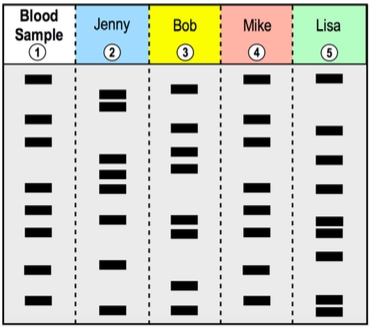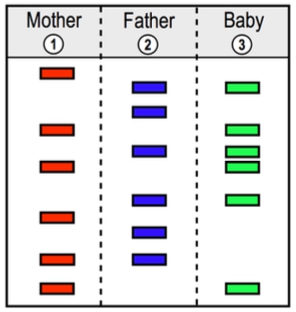In this video, we're going to begin our lesson on gel electrophoresis. Gel electrophoresis is a technique used to separate and visualize fragments of DNA using a 3-dimensional gel matrix. It's important to note that DNA itself is a negatively charged molecule. This negatively charged DNA will be separated by its size using gel electrophoresis, by employing an electrical current and an ion buffer solution. The top of this gel used in gel electrophoresis is where the cathode is located, representing the negatively charged end of the gel where the DNA samples are first loaded. DNA samples start towards the cathode and migrate away from it towards the anode, which is at the bottom of the gel. The anode represents the positively charged end of the gel, where the DNA samples migrate towards. Gel electrophoresis separates DNA based on its size; the larger fragments of DNA move slower through the gel, remaining closer to their starting point. Conversely, the smaller fragments of DNA will move faster through the gel and will be found towards the bottom of the gel.
If we look at the image below, we get a better understanding of gel electrophoresis. Notice that the gel is organized into lanes, almost like lanes at a bowling alley, and each lane has numbers. At the top of each lane, there are wells which represent the starting place of the DNA. Each lane typically contains a different DNA sample. Initially, there is a reference DNA sample known for its size and characteristics. Individual DNA samples from different subjects might occupy other lanes. Notice also that lanes 5 and 6 in this image are empty; no DNA samples are present in those lanes.
At the top of the gel is the cathode, the negatively charged end where the DNA samples are loaded. The DNA tends to migrate towards the anode at the bottom of the gel since opposite charges attract. This leads to the separation of DNA through this gel matrix. In this image, you can see that the DNA migrates from the top to the bottom of the gel. The specific numbers indicating base pairs (bp) show that gel electrophoresis separates DNA based on size. Longer DNA fragments, which remain towards the top, travel slower through the gel, while shorter DNA fragments migrate faster to the bottom.
On the right-hand side of the image, a graph demonstrates the relationship between DNA fragment size and the distance the fragment travels through the gel. The y-axis showing molecular size has large fragments at the top; the larger the fragment, the less distance it travels through the gel. A photo of an actual gel electrophoresis being performed is displayed, with references on both sides of the gel and different DNA samples in each lane that can be compared to the reference for size estimation.
This concludes our introduction to gel electrophoresis and how it's used to separate and visualize DNA fragments based on size. As we move forward in our course, we'll get some practice applying these concepts. I'll see you all in our next video.



